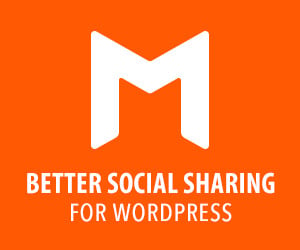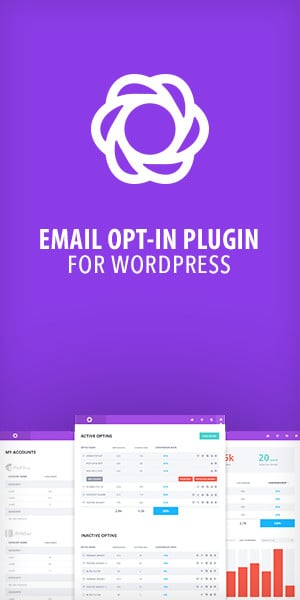Automating email marketing can be a game-changer for businesses of all sizes. With the help of email automation tools, you can create and send targeted messages to your customers at the right time, without having to manually send each email. This can save you time, increase efficiency, and ultimately drive more sales.
One of the biggest advantages of email automation is that it allows you to personalize your messages. By segmenting your audience based on their behavior and interests, you can send them content that is relevant and valuable to them. This can help increase engagement and build stronger relationships with your customers.
Another benefit of email automation is that it can help you stay top of mind with your customers. By sending them regular, targeted messages, you can keep them informed about your products and services, and remind them why they chose to do business with you in the first place. This can help increase customer loyalty and drive repeat business.
Essentials of Email Marketing Automation
Automating email marketing can help you save time and increase the effectiveness of your campaigns. Here are some essentials to keep in mind when setting up automated email campaigns.
Understanding Email Marketing Automation
Email marketing automation is the process of using software to automate repetitive tasks in your email campaigns. This allows you to send messages to your subscribers based on their behavior and preferences, ultimately saving time and increasing efficiency. With automation, you can make personalized and targeted email campaigns that deploy automatically.
Setting Up an Automated Email Campaign
To set up an automated email campaign, you first need to select email automation software that best suits your business needs and goals. Once you have selected the software, you can create an email automation workflow that includes a series of triggers along the customer journey. These triggers will spontaneously send the customer a personalized email, curated specifically for each touchpoint, organically moving the customer along in the sales funnel.
Before making your email automation workflow live, it is important to test it thoroughly to ensure that it works as intended. Once you have tested it, you can make it live and monitor its progress.
Segmentation and Personalization Strategies
Segmentation and personalization are key strategies for effective email marketing automation. By segmenting your email list based on customer data and behavior-triggered rules, you can deliver timely, customized messages to your subscribers. This increases the relevance of your emails, which, in turn, drives engagement and ultimately leads to higher conversion rates.
Personalization goes beyond just using the subscriber’s name in the email. It involves tailoring the content of the email to the subscriber’s specific interests and needs. This can be achieved by using dynamic content, which changes based on the subscriber’s behavior and preferences. By using dynamic content, you can create a more personalized experience for your subscribers, which can lead to higher engagement and conversion rates.
In summary, email marketing automation can help you save time and create more effective campaigns. By understanding the basics of email marketing automation, setting up an automated email campaign, and using segmentation and personalization strategies, you can create targeted and personalized email campaigns that drive engagement and ultimately lead to higher conversion rates.
Advanced Techniques and Best Practices
As you become more comfortable with email marketing automation, you can begin to incorporate advanced techniques and best practices to optimize your campaigns. Here are some strategies to consider:
A/B Testing for Optimized Email Campaigns
A/B testing is a powerful way to optimize your email campaigns. By testing different elements of your emails, such as subject lines, images, and calls-to-action, you can determine what resonates best with your audience and improve your open and click-through rates.
To conduct an A/B test, create two versions of your email with one key difference between them, such as a different subject line. Send each version to a small subset of your email list, and then use the results to determine which version performed better. You can then send the winning version to the rest of your list.
Analyzing and Interpreting Email Campaign Data
To get the most out of your email marketing campaigns, it’s important to analyze and interpret your data. By tracking metrics such as open rates, click-through rates, and conversion rates, you can gain insights into what’s working and what’s not.
Use this data to refine your email campaigns and improve your results over time. For example, if you notice that a particular type of email is consistently underperforming, you may need to adjust your strategy or messaging to better resonate with your audience.
Integrating with CRM and Other Tools
Integrating your email marketing automation platform with other tools, such as your CRM or social media management platform, can help you streamline your workflow and improve your results.
For example, by integrating with your CRM, you can ensure that your email campaigns are targeted and personalized based on your customers’ behavior and preferences. And by integrating with your social media management platform, you can easily share your email campaigns on social media and track engagement.
Overall, by incorporating these advanced techniques and best practices into your email marketing automation strategy, you can optimize your campaigns and achieve better results over time.
Frequently Asked Questions
What are effective strategies for automating email marketing?
Automating email marketing can be a powerful tool for improving your marketing efforts. Some effective strategies for automating email marketing include segmenting your email list, creating personalized messages, and using triggered emails. By segmenting your email list, you can send targeted messages to specific groups of people, increasing the likelihood that they will engage with your content. Personalized messages can also increase engagement by making your subscribers feel valued and recognized. Triggered emails can be used to automatically send messages based on specific actions or events, such as abandoned carts or completed purchases.
Which tools are considered the best for email automation as of 2022?
As of 2022, some of the best tools for email automation include ActiveCampaign, GetResponse, SendX, and Mailmodo. These tools offer features such as email templates, drag-and-drop email builders, and the ability to create automated workflows. When selecting an email automation tool, it’s important to consider factors such as ease of use, pricing, and the specific features that you need for your business.
How can one create an effective email marketing automation template?
Creating an effective email marketing automation template involves several key steps. First, you should identify the specific goals of your email campaign and the target audience that you want to reach. Next, you should create a series of emails that are designed to move your subscribers through the sales funnel, from awareness to purchase. Each email should have a clear call to action and be personalized to the recipient. Finally, you should test your email automation template to ensure that it is effective and making a positive impact on your business.
What examples illustrate successful email marketing automation?
There are many examples of successful email marketing automation campaigns. For example, a company might use automated emails to welcome new subscribers, offer discounts to customers who have abandoned their shopping carts, or send personalized recommendations based on a customer’s browsing history. Another example might be a company that uses automated emails to follow up with customers after a purchase, offering additional products or services that are related to their previous purchase.
What are the primary benefits of implementing email automation?
Implementing email automation can offer several key benefits for your business. First, it can save time and resources by automating repetitive tasks such as sending welcome emails or follow-up messages. Second, it can improve the effectiveness of your marketing efforts by sending targeted and personalized messages to your subscribers. Third, it can help you to build stronger relationships with your customers by providing them with relevant and timely information.
How can automated emails be set up using Outlook?
To set up automated emails using Outlook, you can use the “Rules” feature. First, open Outlook and select the “File” tab. Next, select “Manage Rules & Alerts” and click “New Rule”. From there, you can select the conditions that you want to trigger the email, such as specific keywords in the subject line or sender’s name. Finally, you can choose the actions that you want to take, such as forwarding the email or moving it to a specific folder. Once you have created the rule, Outlook will automatically send the email when the specified conditions are met.




